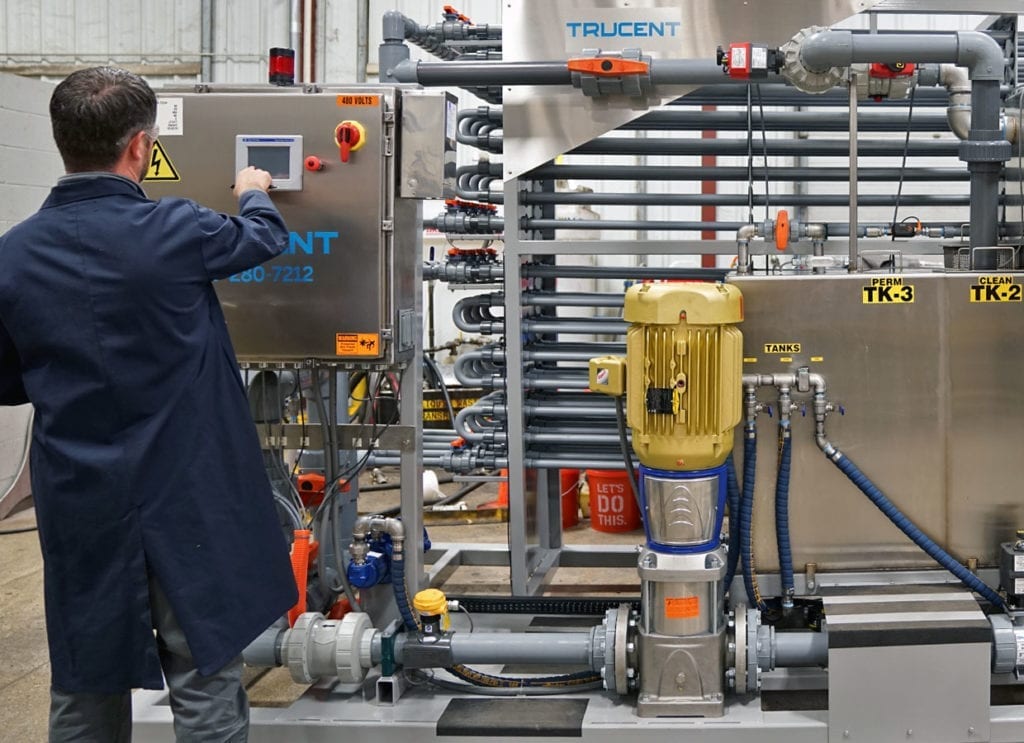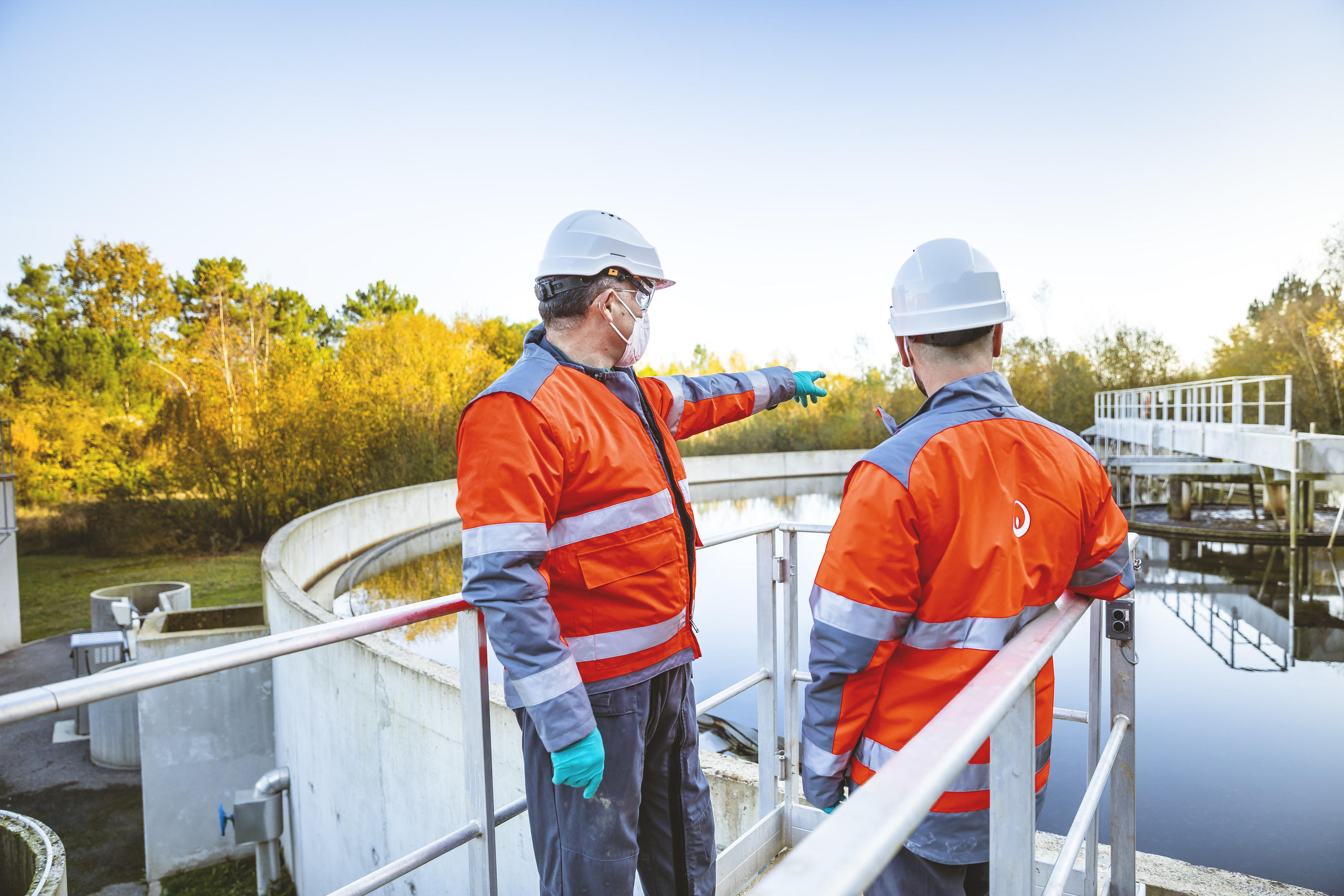Industrial Waste Water Treatment-- Eco-Friendly Solutions for Water Recycling
Innovations and Advancements in Industrial Waste Water Treatment Technologies
The landscape of commercial wastewater treatment is undergoing a transformative change, driven by advancements that boost both efficiency and sustainability. Emerging modern technologies, such as membrane layer bioreactors and microbial gas cells, are redefining contaminant elimination processes while contributing to power generation. Source recovery methods are gaining grip, straightening with round economic climate concepts. As regulatory standards develop, the integration of AI and artificial intelligence into wastewater administration systems guarantees to simplify operations and make sure conformity. The full effects of these improvements raise vital questions concerning their scalability and long-lasting impact on market techniques.
Summary of Waste Water Therapy Technologies
Wastewater therapy innovations encompass a variety of approaches developed to get rid of contaminants from industrial effluents prior to their launch right into the setting. These technologies are crucial for preserving eco-friendly balance and guaranteeing compliance with ecological guidelines. The primary categories of wastewater therapy include physical, chemical, and organic techniques, each serving unique functions based on the nature of the pollutants existing.

Biological treatment methods employ microorganisms to weaken raw material, making them especially efficient for organic-rich effluents. Strategies like activated sludge and biofilm activators harness the natural destruction capabilities of germs, causing significant reductions in biochemical oxygen need (BOD)
Advanced Purification Strategies
Advanced purification techniques stand for a critical development in the realm of industrial wastewater therapy, boosting the efficiency of contaminant removal procedures. Industrial Waste Water Treatment. These approaches encompass an array of modern technologies, including microfiltration, ultrafiltration, nanofiltration, and reverse osmosis, which give consecutive obstacles for various fragment dimensions and chemical frameworks
Microfiltration and ultrafiltration utilize membrane systems to remove suspended solids, germs, and bigger natural molecules, boosting the quality of effluent previous to further treatment. Nanofiltration bridges the gap between ultrafiltration and turn around osmosis, effectively getting rid of organic compounds and divalent ions, thus reducing the load on downstream processes.
Reverse osmosis provides the greatest level of purification by enabling just water and little molecules to pass with its semi-permeable membrane layers, making it optimal for redeeming premium water from commercial effluents. Recent developments in membrane modern technology, consisting of the advancement of more fouling-resistant and sturdy products, have actually considerably improved operational efficiency and lowered prices.
Including these innovative filtering methods not only boosts the overall therapy process but also adds to sustainability initiatives by making it possible for water reuse and resource recuperation in industrial settings. (Industrial Waste Water Treatment)
Organic Therapy Developments

In addition, the advancement of crafted biological systems, such as membrane layer bioreactors (MBRs), incorporates biological treatment with innovative membrane filtering. This assimilation enables higher effluent quality and lowered impact, making it appropriate for space-constrained commercial facilities. Developments in genetically crafted bacteria have actually also arised, improving the biodegradation of certain contaminants, such as pharmaceuticals and hefty steels, that are generally challenging to remove.
Furthermore, the implementation of bioaugmentation methods, where beneficial microorganisms are introduced to enhance the existing organic therapy procedures, has revealed encouraging results in enhancing therapy efficiency. These developments collectively symbolize a pattern towards even more effective and sustainable biological treatment methodologies that can adjust to the advancing complexities of commercial wastewater streams. As markets remain to focus on environmental conformity, these biological innovations will certainly play a crucial duty in wastewater management.

Resource Recuperation Techniques
In industrial settings, the assimilation of resource healing approaches has actually become significantly vital for boosting sustainability and lessening waste. These techniques concentrate on drawing out beneficial products and power from wastewater streams, therefore transforming prospective pollutants right into recyclable resources.
One popular strategy is nutrient recuperation, where nitrogen and phosphorus, frequently present over in wastewater, are caught and exchanged plant foods. This not only minimizes environmental impacts however also offers a round economy remedy for agricultural applications. Furthermore, technologies such as anaerobic food digestion allow for the conversion of natural waste right into biogas, a renewable resource source that can balance out nonrenewable fuel source usage in industrial procedures.
Additionally, progressed filtration and membrane layer modern technologies promote the healing of industrial byproducts such as metals and salts. These recouped products can be rehabilitated right into production processes, minimizing the requirement for virgin resources.
Future Patterns in Waste Water Monitoring
As sectors progressively focus on sustainability, the future of wastewater administration is established to undergo considerable changes. Technical developments, such as artificial intelligence and equipment discovering, will certainly allow extra efficient tracking and monitoring of wastewater systems. These technologies can predict maintenance demands, optimize treatment procedures, and boost decision-making, eventually minimizing functional costs and ecological influence.
Additionally, the integration of circular economic climate principles will play a vital function in wastewater management. Industries are expected to change towards systems sites that not just deal with wastewater however likewise recuperate useful resources, such as nutrients, water, and power. This shift will reduce waste and promote the reuse of products, straightening with worldwide sustainability goals.
Arising treatment techniques, such as membrane bioreactors and progressed oxidation processes, will further improve the effectiveness of wastewater therapy, permitting for better effluents appropriate for reuse. Furthermore, regulative structures are most likely to progress, stressing more stringent requirements for wastewater discharge and encouraging industries to embrace ingenious treatment services.
Verdict
In verdict, the evolution of industrial wastewater treatment technologies shows a substantial change in the direction of boosted performance and sustainability (Industrial Waste Water Treatment). Advancements in advanced purification strategies, organic therapies, and resource healing techniques highlight the sector's dedication to ecological stewardship.
The landscape of commercial wastewater treatment his explanation is undergoing a transformative shift, driven by innovations that boost both effectiveness and sustainability.Wastewater treatment technologies encompass a variety of techniques developed to get rid of pollutants from industrial effluents before their launch right into the atmosphere.Utilizing the power of biological procedures has actually led to considerable technologies in the therapy of commercial wastewater.In addition, the implementation of bioaugmentation YOURURL.com approaches, where valuable germs are introduced to enhance the existing biological treatment processes, has actually revealed promising outcomes in improving therapy performance. These technologies collectively signify a trend towards more sustainable and efficient organic therapy methods that can adjust to the progressing intricacies of industrial wastewater streams.